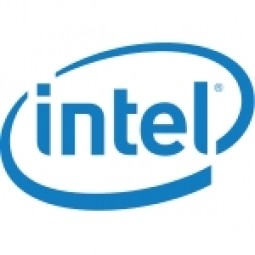Case Studies.
Add Case Study
Our Case Study database tracks 18,926 case studies in the global enterprise technology ecosystem.
Filters allow you to explore case studies quickly and efficiently.
Download Excel
Filters
-
(3)
- (2)
- (1)
-
(3)
- (1)
- (1)
- (1)
-
(2)
- (1)
- (1)
-
(2)
- (1)
- (1)
- (1)
-
(1)
- (1)
- View all 6 Technologies
- (1)
- (1)
- (1)
- (1)
- (1)
- (1)
- (1)
- (1)
- (1)
- (1)
- (1)
- (6)
Selected Filters

|
Wearables for Connected Workers
Together, Honeywell and Intel have developed a IoT proof of concept (PoC) for the Connected Worker. The Connected Worker can take many forms - factory laborer, mine worker, first responder, firefighters and more. For each environment and worker role, a different selection of sensors may be appropriate to provide the most meaningful IoT-fueled dataset to represent that individual worker asset. As with most IoT solutions, it is critical to avoid being overwhelmed by a steady stream of meaningless data. Rather, it is essential to send select actionable intelligence to the cloud for visualization and customized alert notifications. The downside is that data from individual wearable devices - if viewed independently - can potentially cause false alarms and contribute to inefficiencies in a manpower as a result. Fusing sensor technology with big data processing (hub/gateway), analytics - all in the cloud - is the key to improving local intelligence as well as remote visualization of actionable intelligence.
|
|

|
Taking Oil and Gas Exploration to the Next Level
DownUnder GeoSolutions (DUG) wanted to increase computing performance by 5 to 10 times to improve seismic processing. The solution must build on current architecture software investments without sacrificing existing software and scale computing without scaling IT infrastructure costs.
|
|

|
Eco-Friendly, Engaging SAVORTEX Transforms the IoT
Of the 70 million corporate washrooms, 20 percent are equipped with environmentally unfriendly, inefficient, and unhygienic hand-dryers and around 80 percent offer expensive paper towels that create three million tons of waste. As such, reducing building management costs, boosting facility efficiencies, and cutting energy use is very lucrative. SAVORTEX has built the world's first IoT-enabled messaging hand-dryer to disrupt this inefficient sector and transform corporate washrooms into smart spaces. Built on Intel® technology, the SAVORTEX AdDryer* uses the Internet of Things (IoT) to deliver waste savings, alert cleaners to washroom needs based on usage, and engage consumers with tailored, high-definition video messages, allowing enterprises to transform costly commercial washrooms into connected, hygienic, and sustainable revenue-producing assets.ChallengesIngrained issues: High costs, inefficient maintenance, and energy consumption in washrooms make them difficult to manage. SAVORTEX wanted to solve multiple problems at once.Excessive waste: The prevalent drying choice of expensive paper towels significantly impacts the environment in both manufacture and disposal.Status quo: Conventional brushed-motor hand-dryers are energy-hungry and have a short life-expectancy so are costly to run, but finding budget to deploy new solutions on the necessary scale can be difficult.
|
|

|
Coor Brings IoT to the Office
Coor wanted an IoT solution to simplify office manager's job. The solution must require the following features: boost productivity, apply technology innovation, and consolidate management.
|
|

|
Parts Quality Gets Robotic Boost
When manufacturers, such as the world's top car makers and automotive parts suppliers, produce components in their factories, traditional QA testing has been limited to verifying the quality of random parts pulled off the line throughout the day.It was time consuming to perform the detailed tests required, and defective parts could get through despite randomized tests.If a defective part caused a recall or accident, manufacturers could face costly litigation or irreparable damage to their reputation.
|
|

|
Higher Ambient Data Center Temperatures Reduce Costs
As a pioneering IT enabler and technology driver, Intel’s objective was to demonstrate to clients that the modern data center operating environment does not require the level of cooling traditionally thought necessary to guarantee reliable performance. Given the significant energy cost and capital expense associated with cooling technology, there would be considerable potential for dramatically reducing TCO by designing and building data center facilities that run at a higher ambient temperature.Demonstrating the validity of this approach required an accurate and straightforward way to scientifically prove how TCO could be reduced without business risk or compromising IT performance. Intel needed a dependable solution that would rapidly allow a detailed assessment of the entire data center environment under varying workloads and conditions, holistically and at an individual component level.
|
|

